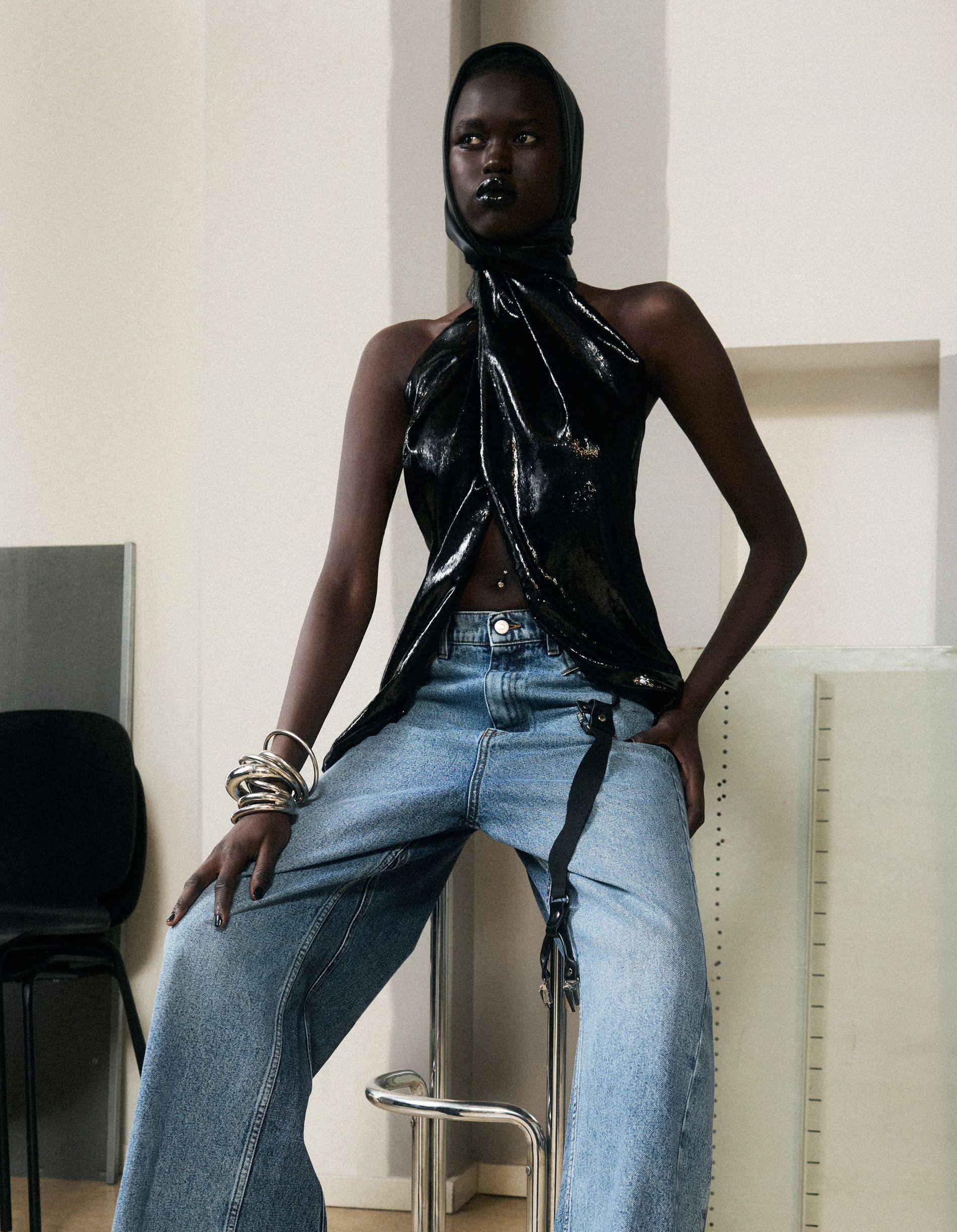Vegan, faux and plant-based leather is everywhere, but what exactly are these materials? And are they really more sustainable?
Vegan leather is no longer just a material reserved for vegan brands – it’s everywhere. But what is vegan leather? These days, that answer is more complicated than just cruelty-free. While some may think of it as a more sustainable alternative to animal hides (it can be in some cases), more often than not, it’s made from synthetic materials like plastic. Here, we break down the pros and cons of vegan leather – and whether it's a fashion phase, a part of the greenwashing wave or an effective way to combat climate change.
What is vegan leather?
While many people find the term vegan leather confusing, there is a simple way to look at it. Animal leather is usually made from the skin of animals the vast majority comes from the beef industry, i.e. cows, but animal leather can also be derived from the skin of pigs, sheep, snakes, horses, and more. Vegan leather, or faux leather, imitates the look and feel of actual leather by using synthetic materials and plant based materials like mushroom, pineapple leaves, cactus, cork, and apple peels to get a similar consistency. However, the majority of vegan leather is made out of polyvinyl chloride (PVC) and polyurethane (PU), both of which are petroleum-based plastics. But as long as the leather isn't derived from any animal products (there are some alternatives that are not animal hide but still bio-based, made from materials like discarded shrimp exoskeletons), it can be considered vegan.

Photo: Jonas Huckstorf
Vegan leather in fashion
The fashion industry has seen a rise in alternative leather options from fish skin to pineapple leaves to cork leather. High-end fashion brands like John Galliano, Prada, and Christian Dior have dabbled in fish skin options for their products; the practice itself has roots dating back centuries to multiple Indigenous groups across the globe. Brands like Nanushka and Hugo Boss, meanwhile, have sought to use leather alternatives that are completely vegan.
Faux versus real leather
If you've decided on a vegan lifestyle or are simply dabbling in plant based ways of living faux leather offers an alternative to the standard animal hides. Real leather is made through a lengthy process in which the animal skin is heavily salted, soaked in calcium oxide, tanned, and then put through the liquoring method, which includes adding fats and oils to the leather to make it softer and stronger. If you're familiar with real leather, you'll be able to recognise its signature earthy scent due to the tanning process, and malleability after you wear it in for a while. While leather can be finished with everything from formaldehyde, and arsenic the most common forms of tanning are chromium and vegetable tanning. Chromium uses chemicals to preserve the animal's skin, and offers more water and heat resistance for the leather products it's applied to. But this form of tanning produces chromium waste, which pollutes the neighbouring waterways. It’s can be a toxic process for the people working in the tanneries to finish the leather.
Alternatively vegetable tanning avoids harmful chemicals and uses natural materials, like tree bark, in their place. This is generally regarded as a safer with less environmental impact. When properly cared for, genuine leather can last for multiple decades in either case.
In recent years, vegan leather has evolved to more than just a cheap plastic alternative. The plant-based alternatives (while still struggling to scale on a large scale to the biggest clothing producers like fast fashion brands) are gaining traction. Top brands like Stella McCartney have begun incorporating this alternative into their offerings. Still, the fossil fuel-based vegan leather usage persists particularly with brands that are making the most clothing. This, isn’t the environmental win you might be thinking of when it comes to veganism. Vegan leather made from plastic often have the a shorter lifespan, ending up in landfill or in donation centers faster than their real animal sibling. Additionally, plastic-based vegan leather products cannot biodegrade as well as natural leather. And while both traditional and faux leather-making processes involve chemicals, PVC can release pollutants and toxic chemicals. While PU leather is less harmful than PVC, it's still derived from fossil fuels. But ultimately, natural fibers are the best option when seeking out vegan leather.
Which one is better?
Vegan leather made from plastic materials like PVC and PU is still harmful to the environment. Especially when it’s part of a trend system that encourages consumers to discard clothing at alarmingly fast rates. If you are vegan and thinking about kicking a leather habit because of animal rights, you should consider a bio-based option.
On the other hand the leather does lead to high carbon emissions particularly when you consider the cattle farming aspect of its origins.
Of course, there are ways of making this kind of purchase a sustainable one. For starters, good, vintage leather is always a win. And if you’re purchasing something new, purchasing from a brand that’s using regenerative farming practices and vegetable tanning is a better alternative. Of course, taking good care of the product over time, and passing it to others instead of discarding is essential.
Both forms of leather have a ways to go in terms of sustainability, but making an informed decision on your next leather purchase, whether it's vegan or not, contributes to that environmental impact.
Originally published by Vogue.com
